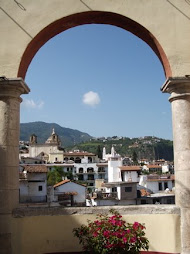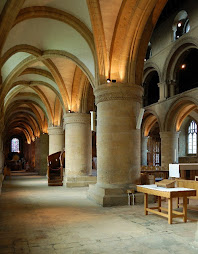Update (9 July 2009): The Times Magazine has removed this slide show from its website because several photos in the series were "digitally altered" and "did not wholly reflect the reality they purported to show." These alterations were not disclosed by the artist, and alert viewers (hat tip: Simon Owens) produced evidence of computer manipulation, such as the composition of a timber-framed interior created by photographing half the scene and completing the tableau with a mirror image of the initial photo.
Last night the Passengers explored the streets of Singapore’s Chinatown and sampled some excellent street vendors’ food. Among the topics of conversation was the incredible downturn in real estate prices across the developed world. Even Singapore has been hit as asking prices for high-end apartments in our building are rumored to be down 50% or more. Most Singaporeans remain stunned by the incredibly perverse lending undertaken by American consumers at the height of the bubble. Retail banking here seems quite staid by American and British norms. Try finding a savings account in Singapore that pays more than one percent APY.
On this topic I want to call attention to a photo essay commissioned by the New York Times Magazine last week. Portuguese photographer Edgar Martins thoughtfully captured the overreach in real estate in the United States. With emphatic verticals and deep fields of vision his images show aspirational follies in the household, holiday, and commercial markets. The depopulation and abandonment on display reveal the hubris behind each project. Leaves blow through an unsecured living room. Timber frames wait for dry wall, and a solitary box mysteriously blocks up the only opening in a concrete edifice. Martins describes his visualizations attempts “to portray the inherent movement in stillness. Sometimes objects become almost like events.” Here the viewer has been inserted in the uncertain moment after building has stopped but before new action has begun.
These photos do ask the viewers to roll up their sleeves and avert failure. The slideshow title “Ruins of the Second Gilded Age” leaves little doubt that an unfavorable judgment has been passed against American indulgence, and the images feature almost no tools that suggest a means to finish the work. Building materials appear on a street of downtown condos, but no forklifts are available to move them. Trash litters a driveway in Georgia without a dumpster to clear it. Furthermore, the artist and/or editors have chosen to visit unsympathetic locations, including those hyped by the artist’s patron. Building for a wealth population in Greenwich, CT, also allowed for spectacular losses on speculative homes. Las Vegas seemingly drew upon an inexhaustible pool of perceived wealth until homeowners balked at the high price demanded by Sin City. Martins' series once again points up the ability of images to make tragically real the stories told by journalists and economic data.









.jpg)